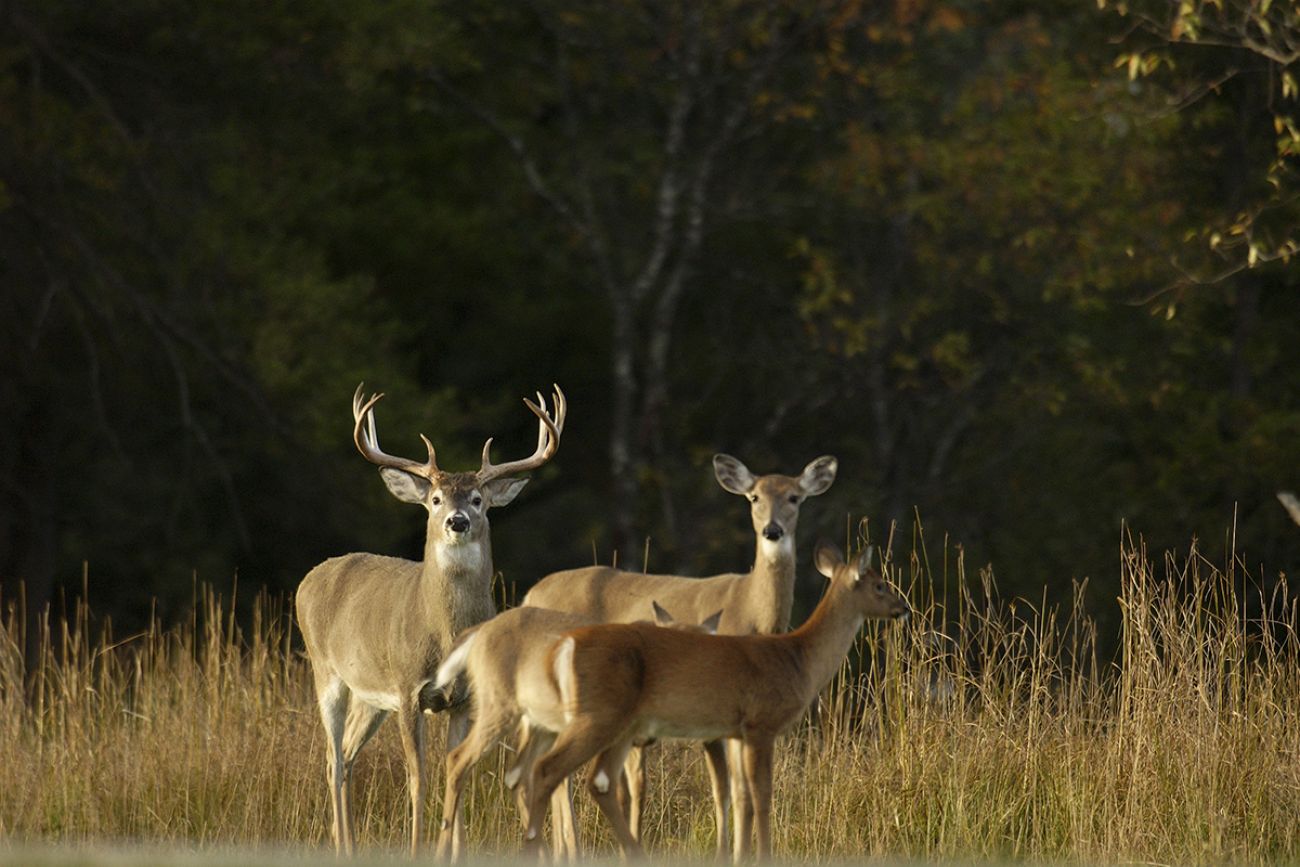Michigan deer harvest numbers are down: How did your county do?

- 2023 deer harvested numbers are on track to land below the 300,000 that are typically reported
- Deer harvest totals increased in only six counties while the rest of the state saw decreases
- The Upper Peninsula saw the steepest decreases, more than 40 percent in some counties
Fewer hunters and a “reluctance” among hunters to take antlerless deer are among the reasons experts say Michigan’s 2023 reported deer harvest numbers fell nearly 10 percent compared to 2022.
Efforts from the DNR to loosen regulations for deer hunting have had little effect on the number of deer harvested each year, which has decreased over the past decade.
As of Friday, 2023 deer hunters reported a harvest of 273,860, almost 10 percent below 2022. Current numbers suggest that deer harvests fell below the typical 300,000.
Related:
- Firearm deer hunting season starts Wednesday in Michigan: What to know
- Hunting season in Michigan: What to know about licenses, seasons, limits
The DNR receives the vast majority of deer harvests reports online or through the mobile app, which was launched in 2022. Final deer harvest numbers will be calculated after the department sends out a survey by mail.
That includes 155,555 antlered deer killed last year compared to 172,022 in 2022. Hunters harvested 118,305 antlerless deer this past hunting season, less than the 131,034 in 2022, according to harvest data collected by the Michigan Department of Natural Resources.
“We are trending downward and I think that’s largely because we have fewer and fewer hunters and a general reluctance for deer hunters to take antlerless deer,” said Chad Steward, deer, moose and elk specialist for the state DNR.
That’s despite efforts to loosen restrictions, including no longer requiring hunters to purchase separate licenses to kill antlerless deer.
Only six counties in the state saw an increase in deer harvested from 2022 to 2023. Muskegon, St. Joseph, Branch, Hillsdale, Sanilac and Huron County each saw up to an 11 percent increase in total deer harvested.
The most deer harvested in 2023 was in Sanilac County, where hunters have reported 8,307 in 2023. The largest percentage increase year over year came in Branch County at 11 percent.
Counties in northern Michigan and the Upper Peninsula saw a decline in the number of harvested deer reported by hunters. In previous years, roughly 10 percent of the state’s totals were from the Upper Peninsula while In 2023, early estimates show it's around 6 percent, according to the DNR.
Deer harvests decreased as much as 40 percent in counties in the western Upper Peninsula, where hunters face more restrictions than other counties. The largest decline in reported deer harvests came in Keweenaw County at more than 41 Percent.
Because the population of antlered deer is lower in the Upper Peninsula, hunters with a combo license tag must ensure that their buck has at least one antler, with three points longer than three inches. Some parts of the UP restrict hunters to an antlered deer, with four points at least three inches long, according to the DNR.
Chippewa county, in which deer harvests were down by about 12 percent, restricts hunters to one antlered deer.
Parts of the Upper Peninsula also restrict the number of antlerless deer a hunter can harvest. In Deer Management Units, where deer populations are closely monitored, hunters are required to have a universal antlerless deer tag in addition to a special access permit, which are given out in a lottery system.
“We have different challenges with deer management in our upper peninsula,” Stewart said. “ For one we tend to experience more significant weather events in the wintertime.”
Severe weather events like excessive snow tend to make the deer migrate to places where they are safer.
Stewart also added that the Upper peninsula has a more complex pool of predators like wolves, coyotes and Black bears.
Chronic Wasting Disease, a fatal neurological disease that affects white-tailed deer, elk and moose, isn’t common in Michigan but has been detected in Clinton, Dickinson, Eaton, Gratiot, Ingham, Ionia, Isabella, Jackson, Kent, Midland and Montcalm counties, Stewart said. Reported deer harvests numbers decreased in those counties.
A growing deer population can cause other issues as well, including significant damage to vegetation, and it can correlate to an increase in deer-vehicle car crashes.
“Using hunting as the primary management tool is going to help to reduce disease but also reduce the spread of things like chronic wasting disease in our deer herd,” said Amy Trotter, chief executive officer for the Michigan United Conservation Clubs.
Michigan Environment Watch
Michigan Environment Watch examines how public policy, industry, and other factors interact with the state’s trove of natural resources.
- See full coverage
- Subscribe
- Share tips and questions with Bridge environment reporter Kelly House
Michigan Environment Watch is made possible by generous financial support from:
Our generous Environment Watch underwriters encourage Bridge Michigan readers to also support civic journalism by becoming Bridge members. Please consider joining today.
See what new members are saying about why they donated to Bridge Michigan:
- “In order for this information to be accurate and unbiased it must be underwritten by its readers, not by special interests.” - Larry S.
- “Not many other media sources report on the topics Bridge does.” - Susan B.
- “Your journalism is outstanding and rare these days.” - Mark S.
If you want to ensure the future of nonpartisan, nonprofit Michigan journalism, please become a member today. You, too, will be asked why you donated and maybe we'll feature your quote next time!






